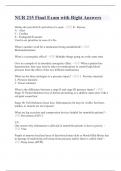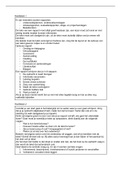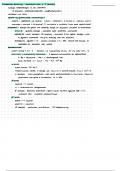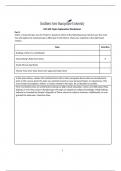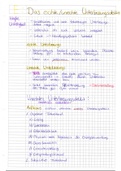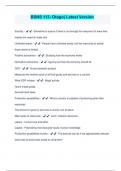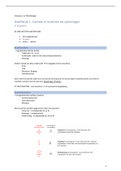Chapter 5 (6) – Constraint Management – Krajewski
Constraint = any factor that limits the performance of a system and restricts its output
Bottleneck = a capacity constraint resource (CCR) whose available capacity limits the
organization’s ability to meet the product volume, product mix, or demand fluctuation
required by the marketplace
Theory of constraints (TOC) = a systematic approach that focuses on actively managing
those constraints that impede a firm’s progress toward its goal
The key principles of the TOC
1. The focus should be on balancing flow, not on balancing capacity
2. Maximizing the output and efficiency of every resource may not maximize the
throughput of the entire system
3. An hour lost at a bottleneck or constrained resource is an hour lost for the whole
system
4. Inventory is needed only in front20* of bottlenecks to prevent the from sitting idle and
in front of assembly and shipping points to protect customer schedules
5. Work should be released into the system only as frequently as needed by the
bottlenecks
- Bottlenecks flows = market demand
6. Activating a non-bottleneck resource is not the same as utilizing a bottleneck
resource
- It doesn’t increase throughput or promote better performance
7. Every capital investment must be viewed from the perspective of the global impact on
overall throughput inventory, and operating expense
The theory of constraints
1. Identify the System Bottleneck(s)
2. Exploit the Bottleneck(s)
3. Subordinate All Other Decisions to Step 2
4. Elevate the Bottleneck(s)
5. Do Not Let Inertia Set In
1
, Managing Bottleneck in Service Processes:
- Throughput time = Total elapsed time from the start to the finish of a job or a
customer being processed at one or more work centers
Drum-Buffer-Rope (DBR) = A planning and control system that regulates the flow of work-
in-process materials at the bottleneck or the capacity constrained resource (CCR) in a
productive system
- The bottleneck schedule is the drum because it sets the beat or the production rate
for the entire plant and is linked to market demand
- Buffer = buffer that plans early flows into the bottleneck and thus protects it from
disruption.
- Rope = represents the tying of material release to the drumbeat, which is the rate at
which the bottleneck controls the throughput of the entire plant.
- Buffer management =represents the tying of material release to the drumbeat,
which is the rate at which the bottleneck controls the throughput of the entire plant.
2


